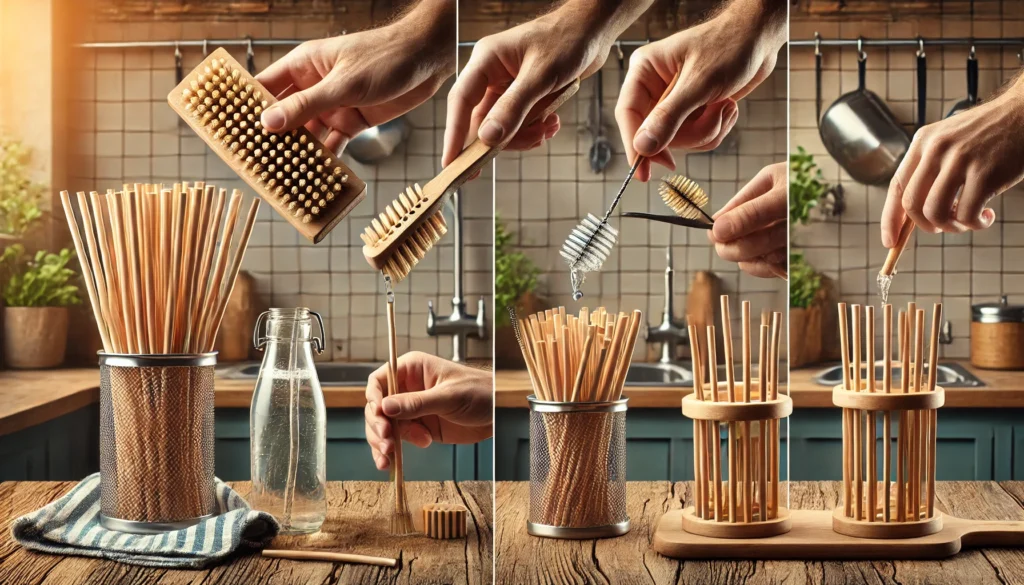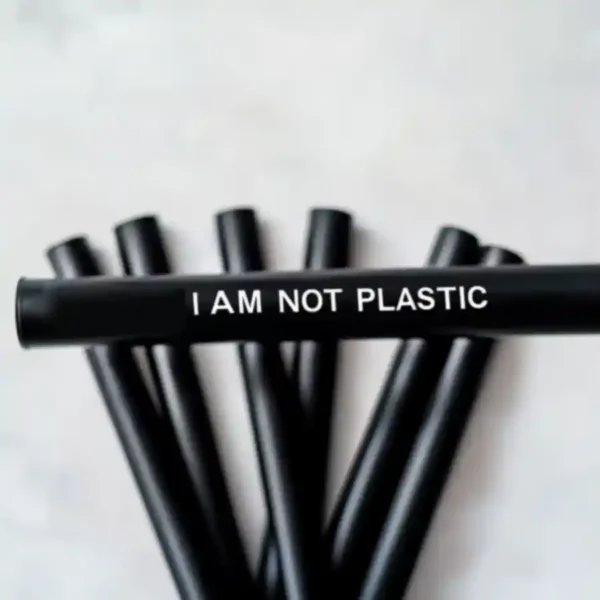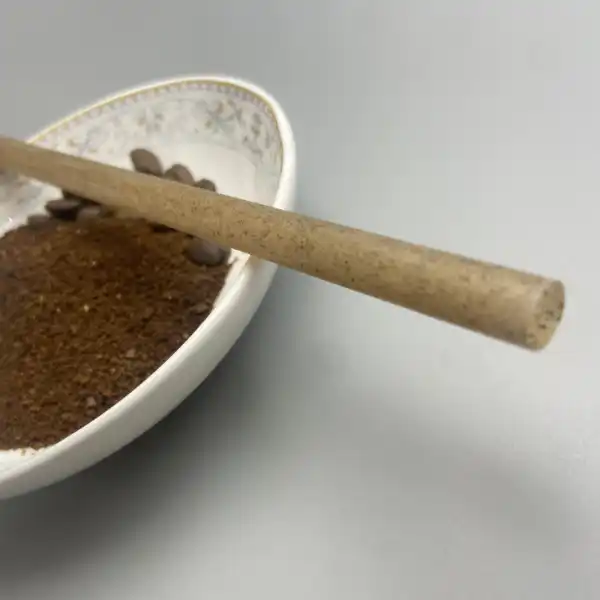Eco‑friendly straws are a key part of a sustainable lifestyle, but to truly reduce waste, it’s essential that your straws stay clean, odor‑free, and in perfect condition. Whether you’re using bamboo, stainless steel, silicone, PLA, or glass, proper storage not only maintains hygiene but also extends the life of your straws. In this guide, we dive into expert storage strategies and offer practical maintenance tips to keep your eco‑straws in top shape. For an extensive selection, explore our full range of products.

I. Introduction
Imagine making an eco‑conscious choice by switching to reusable straws—only to find them developing an odd smell or mold in your kitchen drawer after a few weeks. Proper storage is more than just tidiness; it’s about preserving product longevity, ensuring hygiene, and reducing waste. By following the right cleaning, drying, and storage practices, you can maximize your straws’ shelf life and support a sustainable lifestyle. Always check the product’s certifications to ensure you’re using items that meet strict sustainability standards.
II. Overview of Eco‑Friendly Straw Types
Before discussing storage solutions, it’s important to understand the materials and their specific care requirements:
- Bamboo:
- Pros: Natural, biodegradable, and eco‑friendly.
- Cons: Prone to mold if not dried properly; can warp if over‑soaked.
- Stainless Steel:
- Pros: Extremely durable, resistant to wear, and virtually stain‑free.
- Cons: May develop water spots or scratches if not stored carefully.
- Silicone:
- Pros: Flexible, child‑friendly, and dishwasher safe.
- Cons: Can trap odors if not thoroughly cleaned.
- PLA (Corn‑based):
- Pros: Compostable and eco‑friendly when disposed correctly.
- Cons: Sensitive to heat and humidity; has a limited lifespan.
- Note: For instance, straws made from sugarcane waste require cool, dry storage.
- Glass:
- Pros: Non‑porous, easy to clean, and highly hygienic.
- Cons: Fragile and requires careful handling.

III. General Storage Guidelines
A. Cleaning: The Foundation of Great Storage
- Rinse Immediately:
After use, rinse your straws with warm water to remove any drink residue. - Use a Dedicated Straw Brush:
Invest in a long, thin brush (or even a pipe cleaner) to thoroughly scrub the interior. - Employ Natural Cleaners:
A mixture of warm water, a few drops of mild dish soap, or a natural solution like vinegar with baking soda works well for most materials.
B. Drying: The Key to Mold Prevention
- Air Dry Vertically:
Stand your straws upright in a holder or utensil caddy to allow for proper airflow. - Ensure Complete Dryness:
Allow at least 24 hours for the straws to air dry before storing them in a closed container. - Sunlight Boost (for natural materials):
For bamboo straws, a short period of indirect sunlight can help sanitize and dry them.
C. Containers and Organizers
- Breathable Storage:
For natural materials like bamboo and PLA, opt for mesh bags or open containers to allow air circulation. - Sealed Containers:
For metal or silicone straws, sealed containers can work well in humid environments—as long as the straws are completely dry before storage. - Upright Storage:
Store your straws vertically to prevent water pooling and to promote even drying.
IV. Material‑Specific Storage Tips
A. Bamboo Straws: Battling Moisture
- Moisture Absorption:
Store bamboo straws with a small packet of coarse salt to absorb extra moisture. - Oil Treatment:
Apply a light coating of food‑grade mineral oil every few months to keep them supple and prevent cracking. - Hand Wash Only:
Avoid dishwashers and prolonged soaking to prevent warping or mold growth.
B. Stainless Steel & Silicone Straws: Maintaining Integrity
- Avoid Scratches:
Store stainless steel straws separately from other metal utensils. - Silicone Refresh:
Occasionally “bake” your silicone straws at 300°F for 10 minutes to remove lingering odors. - Cleaning Tip:
A paste of baking soda and water works wonders for stubborn spots on stainless steel.
C. PLA and Compostable Straws: Handling with Care
- Cool, Dry Environment:
Store PLA straws in a sealed container in a cool area away from heat and high humidity. - Limited Shelf Life:
For best quality, use PLA straws within 6–12 months. - Avoid Direct Sunlight:
Keep them away from UV rays, which can accelerate degradation.
D. Glass Straws: Elegant Yet Fragile
- Handle With Care:
Always store glass straws in a padded, upright holder to minimize breakage. - Stain Removal:
Soak glass straws in warm water with vinegar and baking soda, then gently scrub with a soft brush. - Avoid Extreme Temperature Changes:
Prevent sudden temperature shifts to avoid cracking.
V. Maintenance and Longevity
A. Routine Care
- Weekly Deep Clean:
Soak your straws in a vinegar solution (1 part vinegar to 4 parts water) for 30 minutes. - Monthly Inspection:
Check for wear, discoloration, or odd smells and address any issues promptly. - Rotation System:
If you own multiple sets, rotate them to ensure even usage and wear.
B. Troubleshooting Common Issues
- Odor:
Soak in a 50/50 mix of warm water and white vinegar for about an hour. - Discoloration:
Use lemon juice for bamboo straws and a baking soda paste for metal ones. - Mold:
If mold appears on bamboo straws, it may be time to replace them. For other materials, deep clean immediately with a diluted bleach solution (1:10 ratio), rinse thoroughly, and dry completely.
For more on sustainable end‑of‑life options, refer to our compostable straw lifecycle.

VI. Product Spotlight: Explore Our Eco‑Friendly Straw Collection
At NatureBioEco, we offer a comprehensive range of eco‑friendly straws to suit every need. Discover high‑quality products designed with sustainability in mind:
Coffee Grounds Straws
- Boba Coffee Grounds Options:
• Individually Wrapped Boba Coffee Grounds Straw (12mm x 210mm)
• Boba Coffee Grounds Straw (12mm x 210mm) - Cocktail & Smoothie Options:
• Individually Wrapped Cocktail Coffee Grounds Straw (6mm x 140mm)
• Eco‑Friendly Cocktail Coffee Grounds Straw (6mm x 140mm)
• Individually Wrapped Smoothie Coffee Grounds Straw (8mm x 140mm)
• Smoothie Coffee Grounds Straw (8mm x 140mm)
• Smoothie Coffee Grounds Straw (8mm x 210mm) - Regular Coffee Grounds Options:
• Individually Wrapped Regular Coffee Grounds Straw (6mm x 140mm)
• Regular Coffee Grounds Straw (6mm x 140mm)
• Individually Wrapped Regular Coffee Grounds Straw (6mm x 210mm)
• Regular Coffee Grounds Straw (6mm x 210mm)
Sugarcane Straws
- Customizable Options:
• Customizable Sugarcane Straws
• Customizable Coffee Grounds Straw - Cocktail and Boba Variants:
• Individually Wrapped Cocktail Sugarcane Straw (6mm x 140mm)
• Cocktail Sugarcane Straw (6mm x 140mm)
• Boba Sugarcane Straw (12mm x 140mm)
• Individually Wrapped Boba Sugarcane Straw (12mm x 210mm)
• Eco‑Friendly Boba Sugarcane Straw (12mm x 210mm) - Smoothie and Regular Options:
• Wrapped Smoothie Straw (8mm x 140mm)
• Smoothie Sugarcane Straw (8mm x 140mm)
• Wrapped Smoothie Sugarcane Straw (8mm x 210mm)
• Sugarcane Straws for Smoothies (8mm x 210mm)
• Individually Wrapped Regular Sugarcane Straw (6mm x 140mm)
• Regular Sugarcane Straws (6mm x 140mm) – Compostable & Eco‑Friendly
• Sugarcane Straws – Wrapped Regular (6mm x 210mm)
• Eco‑Friendly Regular Sugarcane Straws (6mm x 210mm)
• Eco‑Friendly Sugarcane Straws – Standard Size (6mm x 210mm, 700 Count)
This diverse collection ensures that whether you’re enjoying a coffee, cocktail, smoothie, or regular beverage, you’ll find the perfect eco‑friendly straw to suit your needs.
VII. Frequently Asked Questions (FAQ)
1. What’s the best way to clean bamboo straws?
Bamboo straws should be hand washed immediately after use with warm water and mild dish soap. Use a dedicated straw brush to remove residue, then let them air dry completely. Avoid dishwashing and prolonged soaking, as this can lead to warping or mold growth.
2. How long do stainless steel straws typically last?
With proper care—including thorough cleaning, careful drying, and proper storage—stainless steel straws can last for several years, often between 5 to 10 years or more. Their durability makes them a long‑term eco‑friendly option.
3. Are silicone straws dishwasher safe?
Yes, most silicone straws are dishwasher safe. However, hand washing may help preserve their flexibility and prevent them from absorbing unwanted odors. Always check the manufacturer’s instructions for the best care recommendations.
4. Can PLA straws be composted at home?
PLA (polylactic acid) straws are designed to be compostable under industrial composting conditions. In a typical home compost setup, they might not break down effectively due to lower temperatures and humidity. Check local composting guidelines to see if home composting is an option for PLA.
5. How often should I replace my eco‑friendly straws?
The replacement frequency varies by material. Bamboo straws, for example, may need to be replaced every few months to a year if signs of wear or mold appear. In contrast, stainless steel, silicone, and glass straws can last several years with proper care. Regular inspection is key.
6. What’s the most hygienic material for reusable straws?
Stainless steel and glass are generally considered the most hygienic since they are non‑porous and less likely to harbor bacteria. However, any straw will remain hygienic if it is cleaned and dried properly after each use.
7. How do I remove stains from glass straws?
For glass straws, mix warm water with white vinegar and a small amount of baking soda. Soak the straws in the solution and use a soft brush to gently scrub away any stains. Rinse thoroughly and let them air dry to avoid water spots.
8. Is it safe to use bamboo straws for hot drinks?
Bamboo straws can be used for hot beverages, but caution is advised. Prolonged exposure to high temperatures may cause them to warp or degrade. It’s best to check the manufacturer’s guidelines to ensure they are designed for hot liquid use.
VIII. Conclusion
Proper storage and regular maintenance of your eco‑friendly straws are crucial steps in supporting a sustainable lifestyle. By taking care of your straws—cleaning them immediately after use, drying them completely, and storing them appropriately—you not only extend their lifespan but also reduce overall waste. Whether you’re sipping from bamboo, stainless steel, silicone, PLA, or glass, these expert tips will ensure that your straws remain in pristine condition for as long as possible.
Have a clever storage hack or tip of your own? Share your ideas in the comments and join our community of savvy, sustainable sippers!
By integrating these practices and exploring our comprehensive collection of eco‑friendly straws, you’re not only caring for your health but also contributing to a greener planet. Happy sipping!






